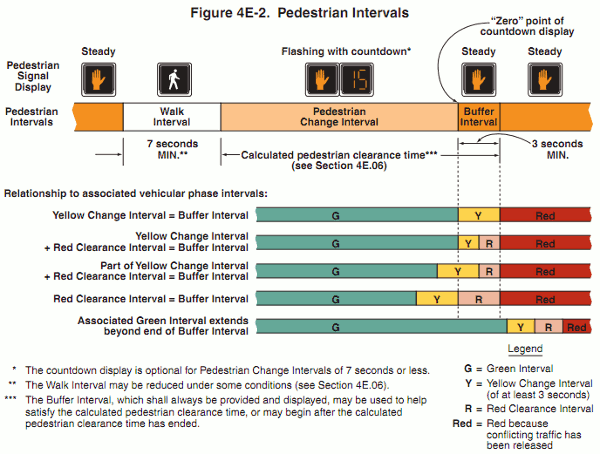Earlier this week we pointed out that the crosswalk along Westlake at Mercer has been closed as part of the Mercer Corridor Project. We have an update, as SDOT has responded to confirm our assumptions:
You are correct that the eastern crosswalk at Mercer St. and Westlake Ave. N is closed due to the two left-hand turn lanes from southbound Westlake Ave. N onto eastbound Mercer St. The volume and timing of traffic turning left (traffic that crosses the eastern crosswalk) is too high to keep the crosswalk safely open. This traffic configuration is in place to accommodate high volumes of traffic now using Westlake Ave. N to access Mercer St. while construction is occurring on other streets, such as 9th Ave. N.
The eastern crosswalk at Mercer St. and Westlake Ave. N will likely be closed for the duration of the Mercer Corridor Project, through mid-2013.
(emphasis above is mine) The Mercer Corridor Project will significantly improve the pedestrian environment in this area, however, like the McGraw Square construction, this is another project where the impact to pedestrians is worth examining.
View Westlake @ Mercer Crosswalk Closure in a larger map
As with most things SDOT does, safety appears to be one of their foremost considerations. However, the current intersection signaling appears to pose safety risks to both drivers and pedestrians. The current light signals allow drivers on southbound Westlake Ave to turn left onto Mercer St after yielding to northbound traffic. Then the signal changes to a green arrow to allow a protected left turn. By allowing drivers to turn left on yield, the chances of a vehicle collision are increased, which is apparent upon observing rush hour traffic. Due to traffic back-ups, northbound vehicles sometimes have to stop on green before entering the intersection or stop in the intersection, making the unprotected left turn dangerous for vehicles during peak hours.

Vehicle navigating unprotected left turn
Furthermore, with the large “Crosswalk Closed” signs, and no visible crosswalk signal on the east side of the intersection, drivers will be less likely to scan for pedestrians inevitably crossing in this area. The crosswalk closure means that there may be fewer people on foot to be hit by turning cars, but with drivers focusing on navigating the unprotected left turn, the few pedestrians who do cross (albeit illegally) may be more likely to be hit.
Keeping traffic moving through the intersection may be a bigger reason for SDOT closing the crosswalk, but doing this doesn’t significantly increase how many cars can turn left onto Mercer during peak periods. During this evening’s commute, only around 2-5 cars were able to turn on the unprotected left arrow – a relatively small number compared to the high number of cars that turn left on the protected arrow. Re-opening the crosswalk may slow down the cars that are able to turn left on yield, but the number of pedestrians crossing here isn’t high enough to have much of an impact to left-turning traffic.
One of the goals of the Mercer Corridor Project is to support walking in the area – the project will create a street through a neighborhood (South Lake Union) where there is now basically an onramp to a freeway. So why shouldn’t this transformation start with the beginning of the construction project?
By closing this crosswalk, SDOT is expecting people on foot to cross Westlake twice to cross Mercer once, which can add over three minutes to a walk on foot – a long time to spend navigating a single intersection, especially in a city that aspires to be the most walkable city in the nation.

Life-threatening jaywalking or civil disobedience?
As with most construction projects, some inconvenience is unavoidable. However, if SDOT were serious about improving safety at this intersection and upholding the objectives of the Mercer Corridor project, my opinion is that the unprotected left turn for vehicle traffic would be eliminated, at least at peak periods, and the crosswalk would be re-opened at all hours.
On the other hand, SDOT is correct that this is a high-traffic area, and reducing the number of cars able to turn by eliminating the unprotected left turn and by re-opening the crosswalk will have some impact on how quickly vehicles can drive through during rush hour. What do you think? How would you respond to these questions?:
- Does blacking out the crosswalk signal and putting up “crosswalk closed” signs make this intersection more or less safe than if the crosswalk were still open?
- To address the safety issue posed by jaywalking pedestrians, should SDOT install physical barricades (e.g. jersey barriers) or should there be a police presence to reduce the number of people on foot who cross illegally?
- If you were walking along the east side of Westlake and needed to remain on the east side of Westlake, would you cross here illegally where there has been a crosswalk in place, or cross Westlake twice to cross Mercer legally?
- Is SDOT striking the right balance between vehicle throughput and pedestrian accessibility?
- Is there another way this intersection could be configured during the construction period?
[poll id=”4″]
Share your thoughts in the comments. Also, if you have a strong opinion or questions of your own, contact the construction project hotline at (206) 419-5818 or mercerinfo@seattle.gov.








